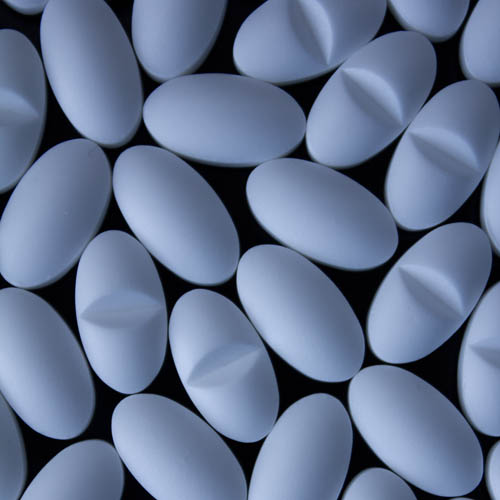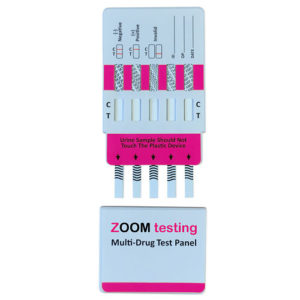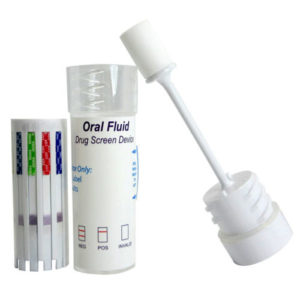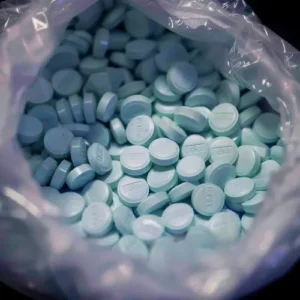What is an Amphetamine?
An amphetamine is a synthetic psycho-stimulant drug. It stimulates the central nervous system, which means that it speeds up messages sent from the brain to the body.
Why Are Amphetamines so Dangerous?
The reason why they can be so dangerous is that amphetamines, especially methamphetamine, can be extremely addictive.
Where Do Amphetamines Come from?
In 1885 a Japanese pharmacologist and chemist by the name of Nagai Nagayoshi became the first person to isolate ephedrine. Then, in 1887 a Romanian chemist by the name of Lazar Edeleanu created amphetamine by synthesising the drug from a chemical compound located in a Chinese plant called Ma-Huange. One of the compounds found in Ma-Haunge was ephedrine.
In 1929, a biochemist in the United States by the name of Gordon Alles, discovered the physiological effects of amphetamine. Shortly after this discovery, amphetamine medications were developed by pharmaceutical companies to treat asthma and congestion. This led to amphetamine being used as a nasal congestion inhaler known as Benzedrine. Between the years 1933 in 1948 Benzedrine could be purchased over-the-counter. Clinical trials further revealed that amphetamine was also very effective in treating depression, narcolepsy, and people suffering with weight problems. During World War II, amphetamine became very popular, with service members from England, Germany, Japan, and the United States being administered the drug to enhance endurance and alertness, and to treat mild depression. Since that time, we’ve seen amphetamines used in a number of drugs, specifically drugs like Ritalin and Adderall, that are used to treat ADD and ADHD.
Ever since the 1940s there has been the concerning issue of addiction to amphetamines, but in the 1980s this problem escalated dramatically due to the rapid increase in the illegal production of methamphetamine.
What Are The Differences between Amphetamine and Methamphetamine?
Because there are many similarities between amphetamine and methamphetamine, many people think they are one-and-the-same; however, they are definitely not the same drug and there are in fact a number of differences, with each drug having a different effect on the mind and body. (When drug testing for Mathamphetamine, a Methamphetamine Drug Test must be used)
Amphetamine is the parent drug that is used to manufacture methamphetamine. While amphetamine is certainly addictive, it has been around for a long time and is often found in medications; but it’s methamphetamine that receives most of the publicity due to the heavy abuse and addictions it causes. Among drug abusers, methamphetamine is the more popular. Both amphetamine and methamphetamine are psycho-stimulants, which means that because they raise dopamine and norepinephrine levels in our brain, users will experience increased focus and have the ability to stay awake for much longer. There will also be an increase in energy and a sense of euphoria.
Due to the chemical make-up of these two drugs, they are processed differently in the user’s body. When metabolised, methamphetamine breaks down into amphetamine, which means that methamphetamine in the user’s body turns into amphetamine and is excreted from the body as amphetamine.
It’s believed that the effects of methamphetamine are much stronger than the effects of amphetamine, and the onset of effects is much quicker. It is also believed that a user will become addicted to methamphetamine much quicker than they would if using amphetamine. Either way, when either of these drugs are used improperly the results can be serious – even fatal.
Another difference between amphetamine and methamphetamine is that amphetamine can be prescribed in medication, whereas methamphetamine is illegal throughout the world because it’s believed to be too dangerous to be prescribed for use. This means that each of these drugs has its own group of addicts, but there will always be those who move from amphetamine abuse to methamphetamine abuse. Sadly, methamphetamine addicts are more likely to turn to crime, and/or lose their jobs and become homeless.
Other Names for Amphetamine
Alternative names for amphetamine are Crystal Meth, Speed, Ice, Meth, Whip, Shards, Whiz, Dixie’s, Rock, Goey, Uppers, and there are probably more. More typically known as Speed, amphetamines are classed as stimulant drugs because they increase the activity of specific chemicals in the brain. Dexamphetamine is an example of an amphetamine, and this drug is used to treat medical conditions such as ADHD. Methamphetamine is more potent than dexamphetamine, and is also known as Rock, Meth, Or Crystal.
What Do Amphetamines Look Like?
There are four common forms of amphetamine – capsules, crystals, tablets, and a powder. Amphetamines are typically swallowed, smoked, injected, or snorted. When sold illegally, they may be packaged in plastic bags, small balloons, or in foils (aluminium foil). The powder itself has a bitter taste and strong smell, and the colour can range from white right through to brown. It may even have traces of pink or grey in it. Amphetamine tablets and capsules vary a lot in colour and size. Illegally produced amphetamines may contain new psychoactive substances, including a mix of drugs, binding agents, sugar, and caffeine; which makes their purity and quality questionable at best.
Abuse and Addiction of Amphetamine
In 1971, the US Food and Drug Administration (then known as the Bureau of Narcotics and Dangerous Drugs) declared that all types of amphetamine, and this included methamphetamine, be classified as Schedule II drugs; meaning they have an accepted medical use but there’s also a high potential for abuse.
In the 1980s, the production of a legal methamphetamine skyrocketed, and so did the abuse of amphetamine. At the same time, there was a surge in prescriptions for amphetamine drugs for the treatment of attention deficit disorder. Over the past decade we have seen an increase in both the medical use and abuse of amphetamines. Then, in 2004 the US Food and Drug Administration placed a ban on the sale of any supplement containing ephedrine. Ephedrine had become a commonplace supplement for athletes, and the FDA was concerned about the number of deaths, and serious health issues caused by people using ephedrine supplements to lose weight and increase endurance.
The figures on the abuse of amphetamine-based prescriptions are shocking. It’s estimated that in the year 2015 in the United States alone, around 1.7 million people used methamphetamine and 4.8 million people from the age of 12-and-up abused their amphetamine-based prescription.
Accurately tracking the use of methamphetamine is almost impossible because it’s illegally manufactured and distributed, and most of it comes from outside the United States. The New York Times reported in early 2018 that methamphetamine use had increased exponentially over the past decade. According to the Times, more than 200 people in Portland, Oregon, died from methamphetamine use in 2016, which was three times more deaths than just a decade earlier. And Portland was just one example of where there’s been a huge increase in the use of methamphetamine.
How Are Amphetamines Taken?
Because the most common form of distribution is through a powdered form, amphetamines can be taken in a large variety of ways. For the fastest results users will snort the powder which can ultimately damage (or ruin) the sensitive membrane lining within the nose or they turn the powder into an injectable form which runs the risk of contracting HIV and other disease due to needle use. Amphetamines are also taken by mixing the powder in with a drink or sprinkling the powder onto marijuana and smoking it as a joint.
How Do Amphetamines Affect Users in the Short Term?
The most notable affect the drug has when it is taken, especially by snorting or injecting it into the user’s body, is a near instant boost in energy and alertness. This will then increase the speed of everything else within the body, including the user’s blood pressure, heart rating, and rate that they breathe.
Amphetamines are also a strong appetite suppressant which means users can typically go for very long periods of time at a pace that is too tough on their bodies and not get the fuel necessary, leading to extreme exhaustion.
Amphetamines work by manipulating the body’s central nervous system there is a chance that users will experience hallucinations, quick on-set of fear, paranoia, and panic when they take the drug.
How Long Do Amphetamines Stay in Your System?
There are many variables that determine how long these drugs stay in your system and drug tests can determine this. Amphetamines are detected at a shorter time frame with some tests, while other tests can detect them up to three months in the system. The metabolism of the person also determines how the drugs will be detected. Other factors include hydration level, age, body mass, health conditions, physical activity and so on so detecting these drugs effectively can be a problem.
Drug Test Timetable

Here is an estimation of the times that amphetamines can be detected with various testing procedures.
- Blood Test 4-6 hours
- Saliva Test About 1 to 2 days
- Urine Test About 2 to 4 days
- Hair Follicle Test up to 90 days
Why Test for Amphetamines?
It’s important to know the levels of these drugs in the body. It can help to determine drug abuse and to detect of there has been an overdose of these types of drugs in the individual.
Urine Drug Testing for Amphetamine
Drugs of abuse are best tested for using a urine drug test kit. A urine drug test for any of these drugs can be a single amphetamine drug test or methamphetamine drug test, or the test can be incorporated into multi-parameter drug test which detects a number of drugs of abuse at the same time. A 7 Parameter Drug Test or 10 Parameter Drug Test are two of the most common ones used by employers in the UK.
Urine drug testing is one of the most common methods for detecting the presence of amphetamines and methamphetamines. This involves collecting a sample of urine from the individual being tested and analyzing it for traces of the drugs or their metabolites.
The urine sample is collected in a sterile collection cup or container. Best practice is for the collection to be supervised to prevent tampering, but it can also be done as an unsupervised at-home test. The sample should be kept refrigerated if there is going to be a delay in testing.
For workplace or legal drug testing, the urine sample will be sent to a certified lab for analysis. There are two main methods used – a screening immunoassay test and a confirmatory GC/MS test.
The immunoassay is used as an initial screen to detect the presence of amphetamines at or above a designated cutoff level. The cutoff for an amphetamine immunoassay is typically 1000 ng/mL. This means any sample that tests positive at or above this level will undergo further confirmatory testing.
If the immunoassay is negative, no further testing is done and the result is reported as negative for amphetamines. If the immunoassay is positive, the same sample will then be tested by GC/MS (gas chromatography/mass spectrometry). This looks directly for the molecular structure of specific amphetamine drugs.
The GC/MS test can identify which specific amphetamines are present. It also has lower cutoff levels than the immunoassay. The cutoff for amphetamine is typically 1000 ng/mL and for methamphetamine it is 500-1000 ng/mL. The final result will be positive or negative based on the GC/MS cutoff level.
Home urine drug tests work similarly using immunoassay strips to detect the presence of amphetamines above a designated cutoff, typically 1000 ng/mL. These tests are fast and inexpensive but cannot confirm which specific amphetamines are present. Professional lab testing is required for full confirmation.
Saliva Drug Testing for Amphetamines
Saliva drug testing is another method that can be used to detect the presence of amphetamines and methamphetamines. This testing analyses a saliva sample for traces of the drugs.
Saliva testing has some advantages over urine testing. The sample collection is easier and less invasive. Saliva testing only detects more recent drug use, as the detection window is shorter than for urine. This can be useful in determining current impairment. The test kits are also more portable and easier to use outside a laboratory setting.
To collect a saliva sample, a swab is placed into the mouth and absorbed along the gums and inner cheeks. This is then placed into a collection tube with a reagent. The sample reacts with the reagent to indicate the presence of drugs.
Saliva drug tests are immunoassay tests, similar to the initial screen used on urine samples. They detect amphetamines above a designated cutoff level, typically around 50 ng/mL. So a positive saliva test means the amphetamine level exceeds this cutoff, but does not indicate which specific drug is present.
The detection window for saliva testing is around 24-48 hours after last use. This is much shorter than the 1-4 days detected in urine. So saliva testing identifies very recent use, but cannot detect longer-term or infrequent amphetamine use.
Oral fluid testing is more susceptible to contamination than urine testing. Foods, beverages, and other factors can sometimes cause false positives for amphetamines. Confirmatory GC/MS lab testing can be done on a positive saliva sample, but this is less common than with urine.
Saliva testing is more convenient than urine testing and useful for determining recent amphetamine use. But urine drug testing remains the standard for most clinical diagnostic and employment purposes. The longer detection window provided by urine testing suits these needs better in many cases. However, saliva testing can serve as a quicker preliminary screen.
Saliva drug tests tend to be multi-parameter. Common one used by employers are the 7 Panel Saliva Drug Testing Kit – UK Workplace & Roadside Drugs and the 12 Panel T-Square Oral Fluid Saliva Drug Test Kit
Passing an Amphetamine Urine Drug Test
Trying to cheat a drugs test is quite common. When testing for methamphetamine or amphetamines, there are various way that people try to avoid detection of drug usage. These methods include, using the urine of someone else, drinking lots of water, drinking some sort of detox solution or having the test done in the afternoon so the drug’s concentration is lower in your system. However none of these methods guarantee a negative result if the person has been using drugs.
If these drugs are getting in the way of your relationships, your ability to hold a job and are impacting your life in a negative way you may need to seek the help of a professional to deal with your issues. There are treatment centres for methamphetamine and amphetamines that can help you break the cycle of drug abuse and get on the road to recovery.
Photo Credit: “Pilllzzzz” (CC BY 2.0) by Janels Katlaps
Zoom Testing is a leading UK drug testing company and a supplier of Drug Test Kits.







